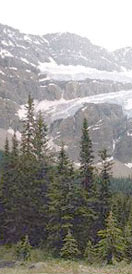Listing
Subsites
Services
| Français | Contact Us | Help | Search | Canada Site | |||||
| Home | About Us | Subject Listing |
NRCan Subsites |
Products and Services |
 |
 |
|
Our Minister Career Opportunities Proactive Disclosure Site  |
NRCan Home > About Us > Trailblazers > George Mercer Dawson
Trailblazer
Paleontologist and Chief Geologist, Geological
Survey of Canada (GSC),
1875–1901 Pioneering field scientistGeorge Mercer Dawson was considered to be the finest Canadian field scientist of his time. He surveyed the Prairies, British Columbia and the Yukon before the country was opened up to the railway and settlement, and his survey records were valuable guides to the natural resources of northern and western Canada. Determined to succeedGeorge was born in Pictou, Nova Scotia, in 1849. As a boy, he contracted Pott's disease — tuberculosis of the spine — which left his back deformed and permanently stunted his growth to the size of a 12-year-old boy. Because of his lengthy illness and recuperation, George was educated at home. Later, he attended McGill University part-time, and then continued his studies under renowned geologists at the Royal School of Mines in England, where he graduated with scholastic honors. Challenges of all kindsHis education completed, he returned to Canada. In 1873, at age 24, George was appointed Geologist and Botanist to Her Majesty's British North America Boundary Commission, and spent the next few years surveying the 49th parallel. Despite his physical challenges, he traveled from Lake of the Woods in western Ontario to the Rocky Mountains. His mapping skills were phenomenally accurate, and his subsequent report to the Commission on the geology and resources of the Prairies stimulated the colonization and development of western Canada. In 1875, he was appointed Paleontologist and Chief Geologist of the Geological Survey of Canada (GSC) and began two decades of exhaustive geological exploration that took him throughout British Columbia, the Yukon and as far north as the Bering Sea. In 1887, he predicted rich gold discoveries in the Yukon, and almost a decade later, prospectors reaped their rewards using his maps. What George may have lacked in physical prowess, he made up for in determination and spirit. He painstakingly covered thousands of miles of uncharted wilderness by canoe, steamboat, horseback, wagon train, railway and on foot. He conducted studies in topography, geology and forestry and drew attention to the potential mineral and forestry wealth hidden in the northern and western regions of Canada. Photographer extraordinaireWhile exploring and working in western Canada, George met First Nations people and studied their languages and customs, earning him the title of Father of Canadian Anthropology. His essay on the Haida of the Queen Charlotte Islands offered insightful ethnological observations. George's hundreds of photographs are an incredible record of a long-ago era. He documented First Nations' village life, tradition and dress and captured images of wagon trains heading west, men building bridges, steamboats in the Yukon and frontier villages — invaluable historical moments. Honoured geologistGeorge authored many articles that won him honours in British and American scientific circles. He received his Doctorate of Science from Princeton University in 1877. In 1895, he became the third Director of the GSC. George was described as vibrant and full of energy, with a reputation as a charming, witty raconteur. He died of acute bronchitis on March 2, 1901, in Ottawa, leaving behind a legacy of knowledge about Canada's landscape and people. Dawson City, Yukon, and Dawson Creek in British Columbia are both named in his honour. Life achievements
|
||||||
|
|||||||